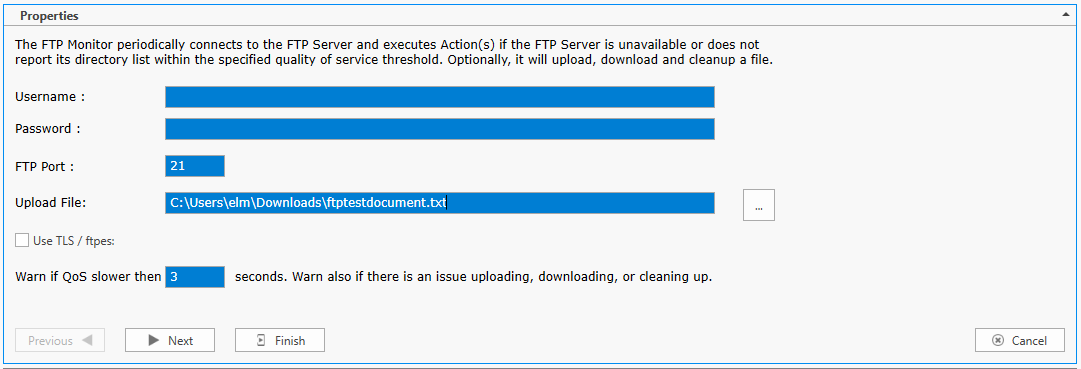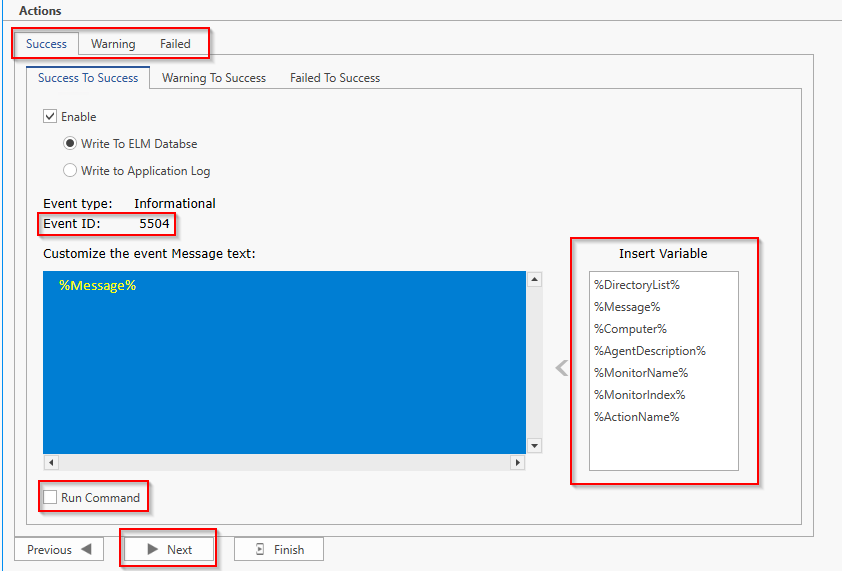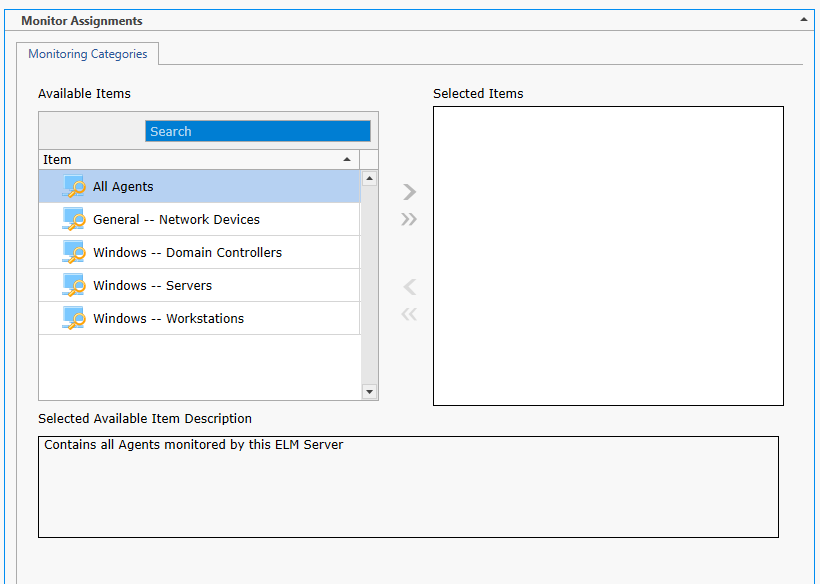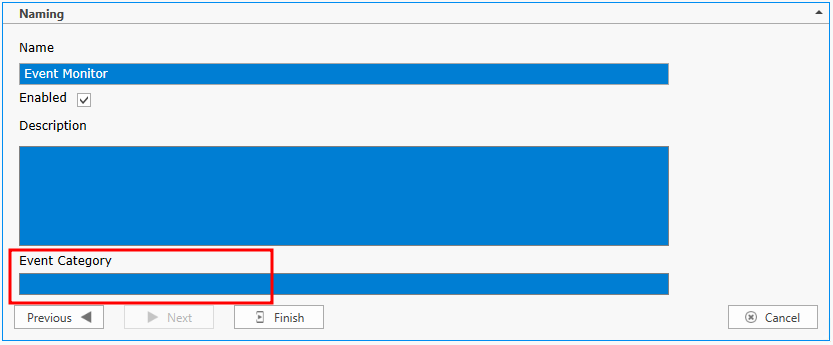An FTP Monitor item monitors the status and availability of an FTP site. Any valid and accessible FTP server can be monitored by the ELM Enterprise Manager Server. An application-layer FTP connection to the FTP Server is made at your specified interval, then a specified file is uploaded to the site and then immediately removed.
Because the ELM Enterprise Manager Server (and not an Agent) makes the FTP connection, you can monitor FTP server availability on any operating system running FTP server software (e.g., Unix, Linux, Novell, Solaris, etc.) Though an agent must be assigned to the FTP server.
FTP Monitor Settings
Username - Can be a specific user name or this can be set to anonymous.
Password - Password for the account specified in the Username field. If you entered anonymous for the username, enter any SMTP address as the password.
FTP Port - The port to which you want the FTP Monitor to connect. By default, TCP port 21 is used. However, you can specify any valid TCP port that is used by the FTP server.
Upload File - Select a file that will be uploaded to the FTP site for testing and then it will be immediately removed from the site.
Warn if QoS slower than __ seconds - You may also monitor the FTP server's performance by monitoring how quickly a response is returned. By specifying a value for this field, you can cause a warning message to be generated whenever the response from the FTP server exceeds the threshold you specify here or if the File fails to upload/cleanup.
Note
The FTP Monitor doesn't have a FTP site setting, assign the FTP Monitor to the agent that is hosting the FTP Site.

Actions
Each Action may be enabled or disabled. In addition you can have the Agent write an event to its application log or written directly to the ELM database.
Success to Success (Informational) 5504 - The previous FTP check was successful
Warning to Success (Informational) 5497 - Some previous ICMP echo requests did not receive a reply and now all requests have been received.
Failed to Success (Informational) 5598 - All previous ICMP echo requests did not receive a reply but now all succeeded.
(Check Box) Run Command: If enabled the ELM server can execute scripts as part of the Action.
Success to Warning (Warning) 5499 - All previous ICMP echo requests received a reply and now some received a reply.
Warning to Warning (Warning) 5505 - Some previous ICMP echo requests did not receive a reply and are still not being recieved.
Failed to Warning (Warning) 5500 - All previous ICMP echo requests did not receive a reply but some were now received.
(Check Box) Run Command: If enabled the ELM server can execute scripts as part of the Action.
Success to Failed (Error) 5501 - All previous ICMP echo requests received a reply and now NONE received a reply.
Warning to Failed (Error) 5502 - Some previous ICMP echo requests did not receive a reply and now none were received.
Failed to Failed (Error) 5503 - All previous ICMP echo requests did not receive a reply and all current attempts failed.
(Check Box) Run Command: If enabled the ELM server can execute scripts as part of the Action.

Monitor Assignments
Assign the writer to a group of servers by selecting a monitoring category.

Scheduling
Specify the interval at which the monitoring, polling or action is to occur. Depending on the Monitor Item type, Items can be scheduled in interval increments of Seconds, Minutes, Hours and Days. The Scheduled Interval is relative to the top of the hour or top of the minute. For example, if a Scheduled Interval is configured for 10 minutes, the Monitor Item will execute at hh:10:00, hh:20:00, hh:30:00, hh:40:00, hh:50:00, h1:00:00, etc. If a Scheduled Interval is configured for 15 seconds, the Monitor Item will execute at hh:00:15, hh:00:30, hh:00:45, hh:01:00, hh:01:15, etc.
Exclusion Configuration
Specify day(s) of week when you do not what the scheduled item to run.

Naming
Enter the name of the item and give it a description.
Event Category
This allows you to assign a custom category for the Action event. This custom category may then be used in filtering and notifying later.
Enabled
Use this check box to enable/disable a monitor item.
